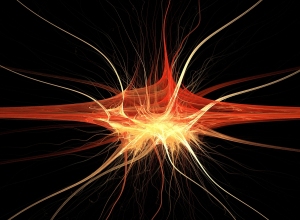 Along with 80 billion neurons and 800 trillion constantly changing connections, individual neurons use very precise rhythms and groups of neurons oscillating together in very specific frequencies. The perplexing relationship of neuronal networks and brain waves is critical to future understanding of the brain.
Along with 80 billion neurons and 800 trillion constantly changing connections, individual neurons use very precise rhythms and groups of neurons oscillating together in very specific frequencies. The perplexing relationship of neuronal networks and brain waves is critical to future understanding of the brain.
The many problems of mapping the brain have been enumerated in the post, the Limits of Current Neuroscience, including daily changes of axons, dendrites and synapses; thousands of different kinds of neurons; thousands of different kinds of post synaptic densities; glial cell networks; and electrical synapses. Another previous post discussed whether the network patterns of the neuronal connections could explain the workings of the mind and whether the changes in these networks could explain disease. But, perhaps the greatest difficultly in understanding how the brain functions is describing the precise mechanisms that allow rhythms and waves to interact constantly with the changing anatomy of the synaptic connections.
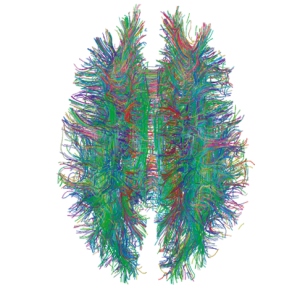
The changing dynamics of wide ranging neuronal circuits occurs throughout the brain in milliseconds at the level of individual neurons and groups of neurons. Neurons join a circuit one moment and another the next moment. Groups of neurons fire action potentials in very specific rhythms that rapidly change. Groups of neurons produce brain waves—synchronous oscillations—that communicate information from one section of the brain to another. Synchronous brain waves couple with other frequencies to connect multiple regions.
This post will describe what is known about the interaction of rhythms and waves with specific synapse anatomy.
Complexity of Dynamic Brain Activity
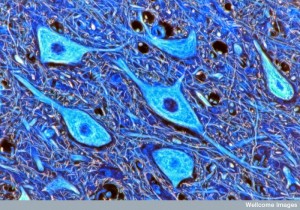 Neurons build anatomically wired connections at the same time that they are firing in specific rhythms and, also, participating in synchronous oscillations that travel short or long distances in the brain. Various types of rhythmic activity occur in specific regions for a precise amount of time.
Neurons build anatomically wired connections at the same time that they are firing in specific rhythms and, also, participating in synchronous oscillations that travel short or long distances in the brain. Various types of rhythmic activity occur in specific regions for a precise amount of time.
A full description of brain function must include all the activity between regions, the direction of the activity, what types of calculations occur to use the information, and what the relayed information means for mental activity. Currently, research for these questions uses electrical encephalographs (EEG), local electrical field potentials, magneto encephalography (MEG), intracranial EEG, as well as attempts to measure individual cells inside and outside.
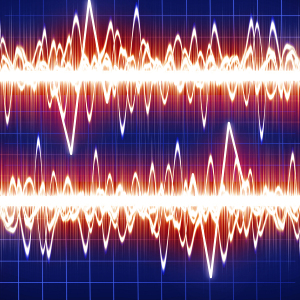 Dynamic information is sometimes called “brain rhythms”, that is, patterns of activity that appear to be related to mental function. These occur in frequencies from less than 1 to 100 cycles per second. Cycles per second are called Herz and are represented as Hz.
Dynamic information is sometimes called “brain rhythms”, that is, patterns of activity that appear to be related to mental function. These occur in frequencies from less than 1 to 100 cycles per second. Cycles per second are called Herz and are represented as Hz.
There is much that is not known about brain rhythms. They can be related to the rates of action potentials along axons, but, also to gradients in the extracellular region and to groups of neurons acting together perhaps with direction from glia cells. Individual neurons may participate in synchronous oscillations or not in a given region.
But, just knowing the connectedness of nodes and distant connections through synapses or waves doesn’t tell us what is being signaled and why this is important. It is not known how important electrical fields and gradients are in this process. Measurement of local electrical potentials includes signals that are occurring across a distance, as well as in a small local environment. To understand how local electricity impacts individual neuronal rhythms and group oscillations, requires painstaking detailed work. See post on Electricity in the Brain for more about this problem. The axon spikes and their rhythms are determined by the individual neuron, but, also, by factors related to neighbors and even distant connections.
To make matters more confusing, dynamic activity can, also, occur without rhythm.
Dynamic Activity Versus Anatomy
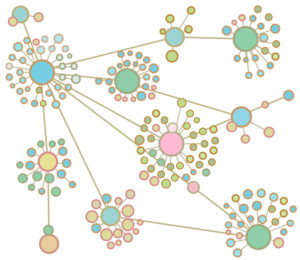 Nodes or modules—neurons that are closely connected together—define the network anatomy. Please see the previous post, Neuron Networks in Healthy and Diseased Brains, for the latest approaches to the mathematical description of brain networks. But, in reality, to describe any node or region, dynamic activity is more than anatomical connections.
Nodes or modules—neurons that are closely connected together—define the network anatomy. Please see the previous post, Neuron Networks in Healthy and Diseased Brains, for the latest approaches to the mathematical description of brain networks. But, in reality, to describe any node or region, dynamic activity is more than anatomical connections.
Columns of cells, or multiple related columns, are a frequent anatomic brain structure, such as in the cortex. In these columns, the dynamic node includes proximity to other structures, but, also, individual and group behavior of neurons, electric currents, and alterations that occur with factors that modulate neurons. These dynamic relationships between neurons and regions of neurons can change in an instant, with one neuron participating in two totally different brain-wide neuroplastic circuits in milliseconds.
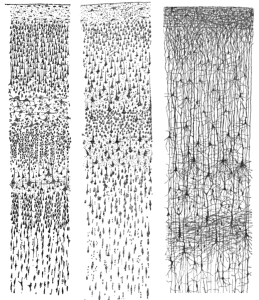 Amazingly, despite the large number of factors involved, specific functional nodes show behavior that recurs and is being measured. Often, there is one range of frequencies that is used by a particular circuit or node, but might, also, use different rhythms at different times. Different layers of the node can have different rhythms at the same time.
Amazingly, despite the large number of factors involved, specific functional nodes show behavior that recurs and is being measured. Often, there is one range of frequencies that is used by a particular circuit or node, but might, also, use different rhythms at different times. Different layers of the node can have different rhythms at the same time.
Modulating molecules can alter the activity of groups of neurons, stimulating several different rhythms in adjacent sections. There can be general slow rhythms for a large region and then individual sections of that region that are faster. One example of this is gamma rhythms connected to excitatory and inhibitory neuron groups.
Brain Wave Frequencies Connecting Brain Regions
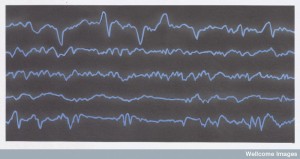 To understand what follows it is important to know the names of specific ranges of frequencies from slow to fast waves. Each appears to have different properties in various brain regions. Some slow and fast waves can work together through a process called coupling. By coupling, many different brain regions can communicate together at the same time using multiple different frequencies. Coupling is a complex process where one rhythm nests within another and is carried along with it.
To understand what follows it is important to know the names of specific ranges of frequencies from slow to fast waves. Each appears to have different properties in various brain regions. Some slow and fast waves can work together through a process called coupling. By coupling, many different brain regions can communicate together at the same time using multiple different frequencies. Coupling is a complex process where one rhythm nests within another and is carried along with it.
Cross frequency coupling occurs when slower and faster frequencies work together—faster somehow nested inside the slower rhythms.
It hasn’t been clear how coupling works and how the networks of neurons with each frequency use this for mental processing. But, it does appear to be very important. Research teasing out these vibrating groups of neurons is extremely complex and is still a work in progress. These studies require measuring the entire brain and all the many metabolic, anatomical and electric factors influencing smaller regions.
The major brain wave frequency ranges are
- Delta wave -(0.1 – 4 Hz)
- Theta wave – (4 – 8 Hz)
- Alpha wave – (8 – 15 Hz)
- Mu wave – (7.5 – 12.5 Hz)
- SMR wave – (12.5 – 15.5 Hz)
- Beta wave – (16 – 31 Hz
- Gamma wave – (32 – 70 Hz)
- Fast gamma – (70 to 130)
Different Brain Waves Working Together
 With synchronous oscillations, a large number of different neurons act together, which must be related to specific types of metabolic and electrical events in each neuron. In many different types of brain activity, groups of neurons couple with other neurons using the gamma range. The theta range, also, has been shown to couple multiple regions.
With synchronous oscillations, a large number of different neurons act together, which must be related to specific types of metabolic and electrical events in each neuron. In many different types of brain activity, groups of neurons couple with other neurons using the gamma range. The theta range, also, has been shown to couple multiple regions.
In the cortex, slow theta waves in the range of 5 to 8 Hz couple with much faster gamma waves and modulate the powerful gamma messages that appear to link distant brain regions. These long-range connections have raised the question whether gamma waves are part of the process that brings together all the disparate parts of conscious experience.
Recent research using EEG in patients with epilepsy show that different thoughts in working memory from disparate brain regions are coupled to oscillations in the hippocampus. When more thoughts are added to the active working memory there are modulations of this activity by coupling brain wave signals in theta and beta to gamma oscillations. The more items in working memory at one moment, the longer the frequencies that are needed to link together with gamma oscillations.
Many Factors Determine Wave Patterns

from Hgamboa
There are many sub divisions of the categories of oscillations (alpha, beta, gamma etc). These very precise frequency bandwidths all have unique characteristics. Each can interact in different ways with the other unique wave function characteristics of other rhythms. Also, each action potential signal arriving at a synapse uniquely affects the next neuron but, separately, has various specific effects on the oscillations.

from Hgamboa
It is not known why there are many different types of beta rhythms, for example. These sub groups of beta may be related to the many types of neuroplasticity, since there are often close relationships to frequencies that alter the connectome. One particular rhythm, beta 1 (one of three types of beta waves – beta 1 is called Low Beta Wave in 12.5–16 Hz), has a particular physiological property. In the association cortex, deep layers oscillate in beta2 and the top in gamma. After plasticity, they become beta1 and there is communication between the top and the bottom layers. In other situations the beta becomes gamma to control the input of the region in a stronger way.
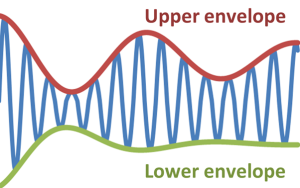
The effect of brain waves is not just based on their frequency. Frequency is the characteristic that science is most familiar with and most able to measure. In fact, there are many other characteristics of oscillations acting in neuronal networks. Each neuron can have a different electrical gradient (see post on electrical fields and gradients) and the neuron can relate to only one part of the oscillation, such as the shape of the wave.
Wave shapes are sometimes called an envelope and have characteristics such as delay, attack, decay, sustain, release among others. The types of decay patterns of the waves affect the currents themselves and create local complex reactions. Decay characteristics are involved in starting and stopping brain wave currents.
While understanding all of these factors is beyond current science, there definitely are physiological, metabolic and neuronal spiking factors determining the great complexity of brain wave frequencies and their interrelationships.
Temporal Structures in Specific Brain Regions
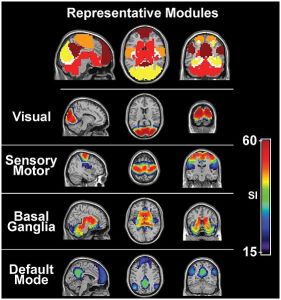
Mental states are correlated with different timing and rhythms in specific regions related to specific perceptions and memories. However, there are usually a large number of steps in each process.
Previous posts have described how many of the brain’s neurons have multi sensory inputs and connections to multiple modalities. Precise rhythms are critical in the brain’s ability to differentiate and use multi modal inputs. For any task, many different brain regions are active and integrated through both multiple synapses and multiple brain waves. Networks use specific frequencies to tie information and neuronal groups together.
Often, the frequencies for integration tasks are in the beta range of 12 to 30Hz. What is confusing about communication through beta frequencies is the large number of different versions of beta. Different types of neurons use specific unique beta oscillations—slow and rapid chemical synaptic activity and electrical synapses.

Hgamboa
Slower 1 to 4Hz (delta) is, also, used in this type of communication. Delta are involved in distant communication, especially with deep structures like the thalamus and basal ganglia.
Gamma frequencies have been studied the most—gamma being thirty to ninety cycles per second. There are many sources of gamma. One example is the inhibition of neurons that have rapid spikes such as parvalbumin-positive PV+ cells communicating to pyramidal cells or to inhibitory interneurons. Other sources of slow waves include the outward and inward muscarinic currents.
The faster gamma rhythms are used in local communication of the same module, region or column. The most attention has been to gamma rhythms in attention. Gamma can help focus a specific input by affecting the local electrical gradients and altering the timing of neuron spiking. They appear to modulate the small local spiking.
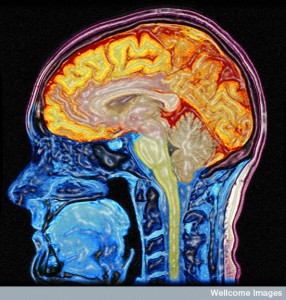 Gamma waves are involved in long-range communication during working memory, as mentioned above. When associations increase, the demand for working memory (holding more in active memory) increases. In this situation, gamma emphasizes the relevant regions across the brain. Gamma uses cross frequency coupling to nest and recruit slower waves from many specific regions to tie them together. Multiple different regions working on specific tasks contribute with different nested frequencies.
Gamma waves are involved in long-range communication during working memory, as mentioned above. When associations increase, the demand for working memory (holding more in active memory) increases. In this situation, gamma emphasizes the relevant regions across the brain. Gamma uses cross frequency coupling to nest and recruit slower waves from many specific regions to tie them together. Multiple different regions working on specific tasks contribute with different nested frequencies.
Gamma rhythms, also, have a unique effect in interacting at long distance with a local module. They signal to a group of neurons to pay attention to a particular signal. Gamma rhythms stimulate the most targeted group of neurons to fire, while holding back other cells through feedback inhibition.
In the cortex, some sensory perception uses multiple frequencies that are connected. This has been shown in the communication between the striatum and the pre frontal cortex. Beta frequencies are important for specific tasks with overlapping groups of neurons and they change as the learning occurs. Some rhythms help with new learning, others for the stability of a memory. Study shows that place and time information in the hippocampus used different specific frequencies.
Some Oscillations Are Controlled by Neuromodulators
 Specific molecules, called neuromodulators, affect the dynamic activity of neuronal groups. These molecules can stimulate specific rhythmic activity of neurons and, also, synchronous brain wave activity. Neuromodulators are neurotransmitters that travel in the extracellular space near a region of neurons and work in a large area of many neurons, rather than in one synapse. These are secreted in various ways and can diffuse to effect entire regions of neurons.
Specific molecules, called neuromodulators, affect the dynamic activity of neuronal groups. These molecules can stimulate specific rhythmic activity of neurons and, also, synchronous brain wave activity. Neuromodulators are neurotransmitters that travel in the extracellular space near a region of neurons and work in a large area of many neurons, rather than in one synapse. These are secreted in various ways and can diffuse to effect entire regions of neurons.
Neuromodulators can work locally or over the entire brain. During sleep, neuromodulators alter the brain during the different phases of sleep. But, they can, also, target specific regions such as for a specific region of the cortex for a specific task. They can turn on regions to be able to receive synchronous oscillations.
Cholinergic systems have been shown to alter rhythms for specific cognitive tasks. They regulate columns in the cortex related to vision using beta oscillations correlated with control of visual processes. Others stimulate interneurons to create gamma activity. They have also been related to weakening of synapses.
Neuronal Networks and Brain Waves
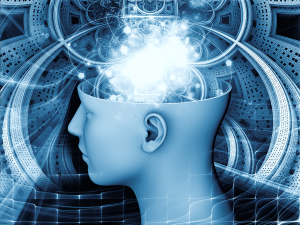 It is not likely that a full understanding of the brain’s relation to mental events will come from descriptions of synaptic networks without, also, understanding superimposed rhythms and wave dynamics. In fact, all of these appear to greatly affect and depend upon each other.
It is not likely that a full understanding of the brain’s relation to mental events will come from descriptions of synaptic networks without, also, understanding superimposed rhythms and wave dynamics. In fact, all of these appear to greatly affect and depend upon each other.
A previous post noted how the brain creates network patterns with electrical synapses, then builds wired chemical synapses on top of the electrical pattern (see post on Electrical Synapses). But, it is not known how another form of electricity—brain waves—is superimposed on electrical and chemical synapses.
Brain waves when they arrive at distant locations can have very different interactions and effects based on the local anatomy and physiology. These processes occur in milliseconds, far faster than any available imaging. Brain mapping will need to include these dimensions to get anywhere in understanding the brain’s relation to mental events.
But, the most important question is often ignored. Where is the direction for all of this? There is no known center directing this fantastically complex circuitry (changing each millisecond), the neuronal action potential rhythms, and the many different brain wave frequencies. Even more complex is the coupling and uncoupling of different frequencies communicating information between local and global regions and the neuro modulation that alters brain waves in specific regions.
With no center in this four dimensional complexity, isn’t the best explanation mind interacting with each molecule, each cell and each brain region.